
Originally published in The Clarinet 51/1 (December 2023).
Printed copies of The Clarinet are available for ICA members.
Audio Reviews:
December 2023
Vienna 1913. Kilian Herold, clarinet; Hansjacob Staemmler, piano. E. Kornauth: Sonata in F Minor for clarinet and piano, op. 5; A. Berg: Vier Stücke (Four Pieces) for clarinet and piano, op. 5; J. Brahms: Sonata in F Minor, op. 120 no. 1; E. W. Korngold/arr. K. Herold: Two Songs: “Liebesbriefchen,” op. 9 no. 4, and “Sterbelied,” op. 14, no. 1. SWR2, 8553517. Total Time: 59:31.
 The German clarinetist Kilian Herold teaches at the Freiburg Hochschule for Music. Former principal clarinetist of the Deutsche Kammerphilharmonie Bremen and the SWR Orchestra, Herold is now a frequent guest performer with the Berlin Philharmonic, the Concertgebouw Orchestra, and elsewhere. The recording reviewed here, Vienna 1913, is a brilliantly conceived and executed project centered on two works from that musically controversial year, both the opus number 5 of their respective composers: Alban Berg’s Vier Stücke, and the Sonata in F Minor by Egon Kornauth, a work given its first recording here. Set beside these two works, and providing a fascinating context for them, is the Sonata in F Minor of Brahms. Two songs by Korngold, arranged for clarinet and piano by Herold, provide a Nachspeise. The concept, as stated in the insightful booklet accompanying the recording, is to explore the juxtaposition of conservatism and avant-garde that existed in Vienna in the early years of the 20th century.
The German clarinetist Kilian Herold teaches at the Freiburg Hochschule for Music. Former principal clarinetist of the Deutsche Kammerphilharmonie Bremen and the SWR Orchestra, Herold is now a frequent guest performer with the Berlin Philharmonic, the Concertgebouw Orchestra, and elsewhere. The recording reviewed here, Vienna 1913, is a brilliantly conceived and executed project centered on two works from that musically controversial year, both the opus number 5 of their respective composers: Alban Berg’s Vier Stücke, and the Sonata in F Minor by Egon Kornauth, a work given its first recording here. Set beside these two works, and providing a fascinating context for them, is the Sonata in F Minor of Brahms. Two songs by Korngold, arranged for clarinet and piano by Herold, provide a Nachspeise. The concept, as stated in the insightful booklet accompanying the recording, is to explore the juxtaposition of conservatism and avant-garde that existed in Vienna in the early years of the 20th century.
Kornauth’s Sonata is a significant discovery. The composer was a stylistic conservative; his harmonic language is the chromatic tonality of the late 19th-century romanticism, not the atonality of his Second Viennese School contemporaries. The Sonata is in four large movements, in the expected order and form. Herold and Staemmler deliver an impassioned performance of the work, with great attention to nuances of phrasing and timing, always letting the music itself determine their choices. Both performers are impeccable technically, and the formidable piano part in particular is handled by Staemmler with seeming ease. Even more than technical perfection, however, it is the full devotion to the communication of the composer’s ideas that makes this performance impressive.
That same approach is brought to the Four Pieces of Berg, which is given an especially fine performance here. The performers play with exceptional sensitivity to dynamics all across the spectrum. The juxtaposition of this work with Kornauth’s Sonata highlights the intense “romanticism” that is characteristic of Berg’s music.
Likewise, the presence of the Brahms Sonata in F Minor on this recording prompts one to consider the later composers’ relationship to the earlier master, and the extent to which Brahms really was progressive (as Schoenberg famously acknowledged). Brahms’s harmonic language is in some ways less radical than Kornauth’s—which at times has a Strauss-like slipperiness—but the older composer’s practice of constantly developing small motives seems to relate him more to Berg. The placing of all three of these works together brings out these relationships. However, apart from all this, the Brahms performance is outstanding on its own. In addition to impeccable technique, intonation, etc., Herold demonstrates the importance of articulation as an expressive device, especially in his use of more emphatic articulation where it is called for (e.g., the opening of the last movement). Tempo choices, always an interesting field of comparison when there are many recordings of a work, are here mostly in the mainstream, although in the third movement, the performers opt for a slightly slower tempo that emphasizes nostalgia rather than dance.
The final pieces on the recording, two songs by Korngold, might be viewed as “bonbons” after the other pieces, but their popular style underlines the theme of the project: the fact that these diverse musical styles coexisted and show complex interrelationships with each other, and with the society that nurtured them.
The recording quality here is very good, except for one anomaly: at the very end of the Brahms, and in a couple of places in the Korngold songs, there is an odd effect where it almost sounds as if two clarinets are playing in unison. This may have to do with reverb that has been added in post-production. This is not a problem elsewhere. Even if you already have multiple recordings of the Brahms and Berg in your collection, treat yourself to these, too—they are now my new reference recordings. The collaboration between these two artists is outstanding. Strongly recommended.
– Jane Ellsworth
Franz Danzi: Potpourris and Sonatas. Luigi Magistrelli, clarinet, basset horn; Claudia Bracco, piano. F. Danzi: Three Potpourris for clarinet and piano; Sonata for clarinet and piano; Sonata for basset horn and piano. Da Vinci Classics, C00636. Total Time: 76:35.
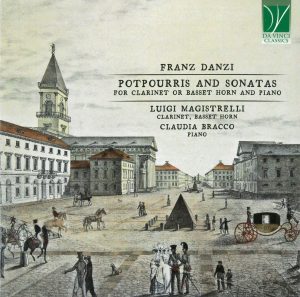
.
In 2022 Da Vinci Classics released Potpourris and Sonatas featuring the music of Franz Danzi, masterfully performed on clarinet and basset horn by Luigi Magistrelli and on piano by Claudia Bracco. Magistrelli also wrote the accompanying liner notes, which discuss Danzi’s relatively recent rise in popularity and provide some historical background for these works.
The album opens with Three Potpourris for clarinet and piano, which Magistrelli indicates have been published as Konzertstück in recent years. While each movement has its own distinct character, the form and structure are similar. The movements open with a rich, legato theme that Magistrelli performs with a tone and sense of lyricism that must be the envy of many vocalists. Then, the movements proceed to lighter, greatly ornamented variations as was common of Italian music from the turn of the 19th century. Magistrelli executes the style and ornamentation impressively, with light fingers, clean technique, and a perfectly classical style of articulation. The third Potpourri is particularly enjoyable, carrying an ideal balance between beautiful lyrical lines and fun, virtuosic passages reminiscent of the works of Weber. Magistrelli’s enjoyment of the work is clearly audible in his phrasing and light, elastic style.
Next on the album is Danzi’s Sonata for clarinet and piano, which Magistrelli mentions in his liner notes, “can be considered one of the most representative clarinet sonatas from the late Classical period.” This piece showcases Bracco’s virtuosic playing in the florid and lush piano lines that persist throughout the piece. Both Bracco and Magistrelli display a wonderful understanding of musical line and communication, as well as historical performance. Rather than focusing on flair and demonstration of virtuosity, the tempos taken for this recording are tasteful and the ornamentation is appropriate throughout. In the second movement, Magistrelli employs a focused and sweet tone, singing through the sostenuto lines without ever losing attention to where the phrase is leading. His commitment to the musical line is impressive and allows him to create truly beautiful and thought-provoking moments. The third movement begins with a charming melody, but the end is an onslaught of technique that Magistrelli handles with virtuosic ease.
Finally, and perhaps most interestingly, the album concludes with Danzi’s Sonata for basset horn and piano. This relatively unknown piece, at least to this reviewer, is delightful and beautifully executed. The first movement has several amiable themes characteristic of the time period, and Magistrelli’s tone on the basset horn does not disappoint. The work also takes advantage of the extended range of the instrument with several fun, arpeggiated, low passages that are performed with ease and gusto. The second movement features lovely, lyrical lines in the basset horn, but most strikingly, we are treated to the musicality and light touch that Bracco brings to the piano. Her phrasing and sense of style serve the music perfectly throughout the second and third movements. Danzi finishes this sonata with less fire and excitement than the Sonata for clarinet, but it is still a wonderful example of late Classical-era music that is performed with enthusiasm, grace, and expert ability.
As Magistrelli suggests in his liner notes, this is an important recording because it provides a window into a time when major works for the clarinet were relatively few. However, the album is also a wonderful showcase of artistry from both Magistrelli and Bracco, and is enjoyable to listen to regardless of historical value.
– Madelyn Moore
Epilogues. Maksim Shtrykov, clarinet; Misuzu Tanaka, piano. J. Brahms: Sonata in F Minor, op. 120 no. 1; Sonata in E-flat Major, op. 120 no. 2; C. Saint-Saëns: Sonata in E-flat Major, op. 167; F. Poulenc: Sonata, FP 184. Concertant Classics, CD-CR202201. Total Time: 74:00.
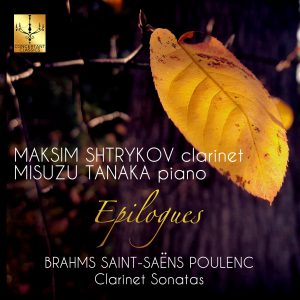 Epilogues is a wonderful homage to the last complete works of three of our most influential composers of the 19th and 20th centuries. This recording begins with the Johannes Brahms Sonata in F Minor for clarinet and piano, op. 120, no. 1. The ensemble creates a lovely sound and the interpretation of the sonata is romantic and expressive. Maksim Shtrykov takes full advantage of his incredible control and huge dynamic range to bring life to this staple of the repertoire. Several times throughout this performance intonation seems to be an issue, but the group clearly creates a warm and natural blend. Pianist Misuzu Tanaka also uses her incredible technical prowess to easily deliver a flowing and flawless performance. The work ends with an exciting Vivace movement executed with ease and agility by the ensemble.
Epilogues is a wonderful homage to the last complete works of three of our most influential composers of the 19th and 20th centuries. This recording begins with the Johannes Brahms Sonata in F Minor for clarinet and piano, op. 120, no. 1. The ensemble creates a lovely sound and the interpretation of the sonata is romantic and expressive. Maksim Shtrykov takes full advantage of his incredible control and huge dynamic range to bring life to this staple of the repertoire. Several times throughout this performance intonation seems to be an issue, but the group clearly creates a warm and natural blend. Pianist Misuzu Tanaka also uses her incredible technical prowess to easily deliver a flowing and flawless performance. The work ends with an exciting Vivace movement executed with ease and agility by the ensemble.
In the second sonata of Brahms the duo creates a lovely atmosphere and again uses rubato and tempo shifts to bring forth and highlight the incredible writing of Brahms. The opening movement is performed with great clarity and conviction. Again, intonation seems to be the only negative aspect of this performance. The recording has an elegance and smoothness that is well-balanced.
The Sonata in E-flat Major, op. 167 by Camille Saint-Saëns begins with a warm and expressive opening performed by Shtrykov and Tanaka. Tempos are generally well thought out, but left me craving more rhythmic flow and less tempo fluctuation throughout the work. The ensemble comes to life in the Allegro animato movement with a fiery and quirky interpretation. Moving on to the Lento, the seemingly “easy” movement of this work, the group seems to flounder for a bit, losing the carefree approach present in much of the rest of the work. The ethereal ending seems uneasy and labored. I would have preferred smoother and delicate sound and attacks. Back in the groove for the fourth movement, the duo opens by showcasing their limitless technical ability with a blazing tempo and flamboyant interpretation.
The recording closes with the Francis Poulenc Sonata for clarinet and piano, FP 184, and is full of high energy and virtuosic playing from both members. The duo’s approach to this work is playful and fun with numerous deviations from the composer’s score. One of the most beautiful moments in this recording begins as the second movement unfolds for the first few seconds. Shtrykov’s control and soft playing are done with ease and delicateness. Unfortunately, intonation in this movement overshadows the lovely mood created by the ensemble. Tanaka’s interpretation is light and well-balanced, especially near the end of the movement. Allegro con Fuoco ends this recording at a blazing and fiery speed. Maybe a bit over the top! The group seems to struggle with rhythmic energy at times and the clarinet seems a bit less controlled musically and tonally. As the recapitulation occurs the group creates a wonderful reminiscent feeling that ends the work and recording with beauty and ease.
The program booklet for this recording falls short on content and does not include a comprehensive content guide, complete work titles or movements. The cover art is nicely designed. Overall, the artistic and creative work on this recording is excellent and I would recommend it for those searching for some new ideas and interesting interpretations of these works.
– Robert DiLutis
Clarinet Choir Classics. University of Florida Clarinet Ensemble: Mitchell Estrin, music director and conductor; David A. Waybright, guest conductor. F. Mendelssohn/arr. D. Freeman: Hebrides Overture, op. 26; N. Rimsky-Korsakov/arr. G. F. Roach: “Dance of the Buffoons” from The Snow Maiden; R.V. Williams/arr. M. Johnston: English Folk Song Suite; S. Barber/arr. L. Cailliet: Adagio for Strings, op. 11; P. Harvey: The Young Person’s Guide to the Clarinet Choir; C. M. von Weber/arr. D. Freeman: “Overture” to Oberon; G. Gershwin/arr. R. Denwood: Walking the Dog; S. Yagisawa: Capriccio; F. Mercury/arr. K. T. Kerstetter: Bohemian Rhapsody. Mark Records, 50193-MCD. Total Time: 67:25.
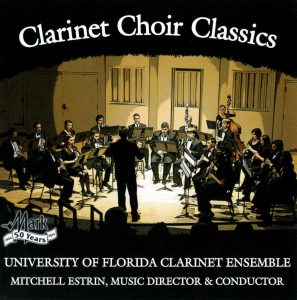 Mitchell Estrin, professor of clarinet at the University of Florida, is well known for his longstanding affiliation with the New York Philharmonic and in teaching circles as the education and creative development manager of the Buffet Group USA. Estrin’s clarinet ensemble includes 25 clarinetists, covering the full gamut of instruments, as well as a percussionist and string bassist.
Mitchell Estrin, professor of clarinet at the University of Florida, is well known for his longstanding affiliation with the New York Philharmonic and in teaching circles as the education and creative development manager of the Buffet Group USA. Estrin’s clarinet ensemble includes 25 clarinetists, covering the full gamut of instruments, as well as a percussionist and string bassist.
The album opens with an excellent arrangement of Felix Mendelssohn’s Hebrides Overture by Daniel Freeman. The orchestral colors of Mendelssohn’s work are aptly conceived in this arrangement, including the Mendelssohnian “filigree” string parts which are deftly handled and well-balanced by this ensemble. The highlight of this performance is the exceptionally played clarinet soli.
“Dance of the Buffoons” is an interlude in Act III from the opera The Snow Maiden by master orchestrator Nikolai Rimsky-Korsakov, here arranged by George F. Roach. This delightful romp adequately displays the technical prowess and clean ensemble playing by this group.
A familiar favorite, English Folk Song Suite by Ralph Vaughan Williams, has been adapted for clarinet choir in this performance by the brilliant arranger Matt Johnson. As in Freeman’s Hebrides, Johnston’s representation of the original instrumentation has been fully realized in this recording. The quality of the recording here is also to be commended; balances and reverberation are perfect.
Following the Vaughan Williams is another familiar work by British composer Samuel Barber, Adagio for Strings, arranged here by the legendary Lucien Cailliet. The beautiful sounds, blend and balance in this performance are quite notable, as is the excellent intonation. I would identify this arrangement as the most difficult work on the album and Estrin’s ensemble handles it exceptionally well.
The most curious offering on this album is Paul Harvey’s The Young Person’s Guide to the Clarinet Choir, a work modeled and narrated similarly to Britten’s The Young Person’s Guide to the Orchestra. This work is a theme and variations of the nursery rhyme “Hickory Dickory Dock.” Not only is the playing outstanding in this recording, but the narration is very informative!
Clarinetists love Carl Maria von Weber. His friendship with the great 19th-century clarinetist Heinrich Baermann led to the composition of some of the most revered solo works ever written for the instrument. But, if you ask a non-clarinetist about Weber, he’s an opera composer! Here we have Weber’s very famous “Overture” to Oberon. Again, virtuosity is on full display in Estrin’s ensemble, with outstanding technique and articulation.
Walking the Dog by George Gershwin is a jazzy romp written in 1937 for the RKO film Shall We Dance?. Kudos to the E-flat clarinet soloist here for their informed jazz stylings!
Satoshi Yagisawa’s Capriccio is a clarinet octet commissioned in 2002 by the Tokai Takanawadai University High School. A rhythmically energized work full of technical flourishes and beautiful melodic writing, this performance, again, exemplifies this ensemble’s exquisite intonation and blend.
The album concludes with the multi-generational favorite, Bohemian Rhapsody by Freddie Mercury arranged by K. Tod Kerstetter, another highly regarded purveyor of excellent clarinet choir adaptations. Replete with drum kit underpinning, the “Mercurian” melodies are beautifully delivered by this outstanding ensemble.
– Kenneth Long
Julian Bliss and Bradley Moore: Works by Debussy, Françaix, Glinka, Milhaud, and Prokofiev. Julian Bliss, clarinet; Bradley Moore, piano. C. Debussy: Première Rhapsodie; J. Françaix: Tema con Variazioni; M. Glinka/arr. J. Bliss: Sonata in D Minor; D. Milhaud: Sonatine, op. 100; S. Prokofiev/arr. J. Bliss: Sonata in D, op. 94. Signum Classics, SIGCD384. Total Time: 69:11.
 Julian Bliss’s album featuring works by Debussy, Françaix, and Milhaud as well as his own arrangements of Glinka’s Sonata in D Minor and Prokofiev’s Sonata in D, is exceptional. Bliss and pianist Bradley Moore recorded the album in 2013. Listeners will be especially impressed with the textural clarity and shared vision that these collaborators bring to the music. The performances are first-rate.
Julian Bliss’s album featuring works by Debussy, Françaix, and Milhaud as well as his own arrangements of Glinka’s Sonata in D Minor and Prokofiev’s Sonata in D, is exceptional. Bliss and pianist Bradley Moore recorded the album in 2013. Listeners will be especially impressed with the textural clarity and shared vision that these collaborators bring to the music. The performances are first-rate.
The album opens with one of Bliss’s favorite pieces: Debussy’s Première Rhapsodie. Bliss’s technique is impeccable. The passagework on the first and last pages is precise, brisk, and even. Both Bliss and Moore execute the technical and artistic demands with ease. Bliss’s seamless note connection deserves special mention. The performers give the melodies a lovely forward direction without allowing the phrasing to feel rushed. By staying on the front edge of the tempo, they effectively convey the effervescent character of the piece.
A playful rendition of Françaix’s Tema con Variazioni follows. The duo establishes beautiful flow and remarkable contrast of both dynamics and characters. Variation 1 is especially captivating with its mysterious quality and evenness. The fast variations as well as the flashy cadenza are brilliantly played. This piece allows Bliss to showcase his virtuosity and great tonal control.
Next is Bliss’s delightful arrangement of Glinka’s Sonata in D Minor. This piece, originally for viola, features a fast and slow movement. Bliss and Moore are masterful storytellers as they artfully shape the long vocal-like melodies. The interplay between clarinet and piano is well executed as they effortlessly trade lines and fast passagework. The second movement opens with a simple yet attractive theme with roots in the classical style. This arrangement is well-suited to the clarinet.
Bliss and Moore play Milhaud’s Sonatine with great conviction, rhythmic precision and clarity of articulation. They offer a thoughtful interpretation that allows for natural connections between the sections. Further, they successfully sustain the energy throughout the entire third movement.
The lyrical passages in the first movement and the opening of the second movement are particularly noteworthy.
The album concludes with Bliss’s arrangement of Prokofiev’s Sonata in D (originally written for flute and piano and later adapted for violin by the composer). Bliss’s arrangement captures the essence of the original. It maintains much of the high registration of the original with several passages that are notably higher (up to a high B6) than in Kent Kennan’s transcription. Bliss’s execution of the high passagework is impressive, but the extremely high altissimo range sticks out of the texture in a few instances. Bliss and Moore choose a deliberate and reflective tempo at the opening that allows for more contrast later in the movement. The hushed quality they achieve toward the end of the first movement is exquisite. Other highlights of the performance are the second movement’s ascending and descending scales traded between clarinet and piano, the third movement’s expressive and wide-ranging leaps, and the driving energy in the fourth.
What a pleasure it is to listen to such fine playing! Congratulations to Bliss and Moore for presenting such a memorable album.
– Justin Stanley
An American in Paris. Kristine Dizon, clarinet; Lindsay Garritson, piano. G. Gershwin/arr. R. Denwood: Promenade “Walking the Dog”; F. Aubin: Deux Pièces en Forme de Jazz; G. Tailleferre: Arabesque; B. Kovács: After You, Mr. Gershwin; N. Bacri: Prelude et toccata; Ó. Navarro: “Lenny” Fantasy for Clarinet and Piano; C. Boissier: From Midnight to Dawn, ballade for clarinet and piano; M. Mangani: “Blues” from An American in Paris; P. Harvey: Three Études on Themes of George Gershwin. Modern Artist Project. Total Time: 48:43.
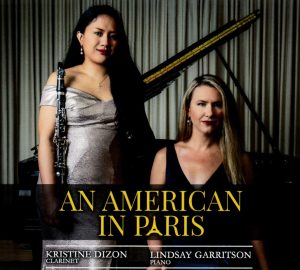 In the ever-evolving world of music, some albums manage to capture the essence of bygone eras while infusing them with a fresh, contemporary spirit. Kristine Dizon’s 2022 release of An American in Paris stands as an example of this balance, offering an homage to timeless compositions while embracing the musical landscape of today. Drawing inspiration from her time living in Paris while working on her PhD in cultural studies and studying clarinet, Dizon and pianist Lindsay Garritson breathe life into timeless melodies and modern voices through their artistry and interpretation.
In the ever-evolving world of music, some albums manage to capture the essence of bygone eras while infusing them with a fresh, contemporary spirit. Kristine Dizon’s 2022 release of An American in Paris stands as an example of this balance, offering an homage to timeless compositions while embracing the musical landscape of today. Drawing inspiration from her time living in Paris while working on her PhD in cultural studies and studying clarinet, Dizon and pianist Lindsay Garritson breathe life into timeless melodies and modern voices through their artistry and interpretation.
The album opens with a cheerful performance of Promenade “Walking the Dog” by George Gershwin/arr. Denwood. The album then travels to Francine Aubin’s Deux Pièces en Forme de Jazz which offers a distinctly French perspective. From the very first notes, Dizon captivates with her blend of classical finesse and modern resonance.
Germaine Tailleferre was the only female member of the group of 20th-century French composers known as Les Six, and her Arabesque is a charming, quiet piece. Its floating quality, reminiscent of Eric Satie, is beautifully realized by Dizon’s expression and elegance. The album’s track list, carefully curated to maintain a sense of cohesion, then takes the listener to After You, Mr. Gershwin by Béla Kovács. Dizon’s shimmering technique and stylistic flair enhance the playful and exuberant moments that evoke the bustling streets of Paris.
Nicolas Bacri’s Prelude et toccata, published in 2020, is one of the most recent pieces on this album. The two contrasting sections showcase Dizon’s ability to narratively weave together different musical ideas. The opening section, “Prelude,” captures the listener’s attention with its lyrical and pensive character. The “Toccata” presents a shift in mood and energy. Bacri’s skillful writing presents the clarinetist with cascading runs, intricate passages, and playful leaps that demand not only technical mastery but also a sense of joy. Bursting forth with rhythmic drive and lively tempo, Dizon performs this piece with vitality and style while retaining her beautiful, refined sound.
“Lenny” Fantasy for Clarinet and Piano by Óscar Navarro, dedicated to Leonard Bernstein for the centenary of his birth, is a high-spirited tour-de-force. The liner notes state that the work was inspired by the jazz repertoire of Bernstein, which in turn took influence from Gershwin. This frenetic piece hinges around two rhythmic patterns and includes passages of body percussion and voice. Dizon reveals the brilliance and energy contained within the music with jubilant virtuosity. As an ensemble, Dizon and Garritson mesh wonderfully, weaving in and out of one another so effectively that at times they seem like one instrument.
From Midnight to Dawn, ballade for clarinet and piano by French neo-romantic composer Corentin Boissier, begins with a piano introduction after which the clarinet plays a vocal melodic line that searches and meanders, as if adrift. Dizon’s interpretative dexterity is particularly notable in her phrasing and dynamic choices in this lovely piece.
Celebrated Italian composer and clarinetist Michele Mangani anchors this collection of pieces with his “Blues” from An American in Paris. Its carefree homage to Gershwin allows Dizon and Garritson to explore the nuances of Mangani’s composition while leaving their own artistic imprint. Dizon’s choices are tasteful and sensitive, and demonstrate her ability to offer a fresh perspective while embracing the iconic and nostalgic jazz idioms.
To conclude the album, Dizon delivers a first-rate performance of Three Études on Themes of George Gershwin. Rhythmic passages are played with a contagious energy and sparkling articulation, while delicate phrases receive subtle consideration and coloring that is consistent with Dizon’s playing on the entire album.
An American in Paris is a testament to the power of collaboration, musical passion, and creative interpretation. This finely curated album deserves a place in the collection of any music enthusiast, offering a delightful escape into the realm of timeless beauty and artistic expression.
– Anna Roach
duo per se. Scot Humes, clarinet; Tania Tachkova, piano. P. Schuessler: Everything is Blowing Away; Q. C. Hilliard: Coty; A. Donofrio: Clarinet and Piano; E. Wickman: Campus Stellae; Li Tao: Qin Xiao Yi; M. Mobley: I Saw a Man … . Centaur Records, CRC 3999. Total Time: 66:53.
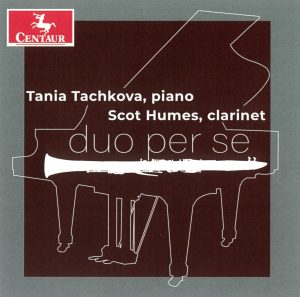 Everything is Blowing Away by Schuessler is a fantastic opening track that showcases the talent and dedication of Scot Humes and Tania Tachkova. The intimate control of the front of each note in all dynamics from both pianist and clarinetist shows a calculated sensitivity and care that is reminiscent of Berg’s Vier Stucke—though the fragmentation is of a less calculated kind, subject to an exterior force, disintegrating as soon as any clarity to the pattern becomes apparent. In the following three movements of Hilliard’s Coty, the musicians are put through their paces. “Daybreak” showcases pure sound and energy framed by bustling piano writing that never loses track of the solo line, resolving into “Sunset,” where a little thinness in the sound becomes an expressive element, squeezing the sorrow out of each note with an equal amount of beauty. The final movement, “Dance,” features a foreboding but intriguing jam for the pianist underneath virtuosic agility for the clarinetist.
Everything is Blowing Away by Schuessler is a fantastic opening track that showcases the talent and dedication of Scot Humes and Tania Tachkova. The intimate control of the front of each note in all dynamics from both pianist and clarinetist shows a calculated sensitivity and care that is reminiscent of Berg’s Vier Stucke—though the fragmentation is of a less calculated kind, subject to an exterior force, disintegrating as soon as any clarity to the pattern becomes apparent. In the following three movements of Hilliard’s Coty, the musicians are put through their paces. “Daybreak” showcases pure sound and energy framed by bustling piano writing that never loses track of the solo line, resolving into “Sunset,” where a little thinness in the sound becomes an expressive element, squeezing the sorrow out of each note with an equal amount of beauty. The final movement, “Dance,” features a foreboding but intriguing jam for the pianist underneath virtuosic agility for the clarinetist.
Donofrio’s Clarinet and Piano brings muted colors, skilled use of atmospheric multiphonics, and plaintive, singing clarinet boasting a gorgeous, even tone that floats around the chords in the piano before ascending to the stratosphere with desperate urgency. In contrast, Wickman’s Campus Stellae is a programmatic work that is expressive but difficult to love on the first hearing. In the first movement, “Pilgrim,” everything suggests fatigue—from the slow plodding of the rhythms to the despairing upward lines and sighing feel of the long notes, the extreme altissimo like a stifled scream. “Fluvio Stellarum” provides some release, with great control across the wide registers and extreme altissimo. A meandering line and downward intervals seem purposely lost but everything resolves into simple and poignantly phrased song. “Angelus” features agreeably aggressive and flexible playing for the effect of urgency.
Li Tao’s Qin Xiao Yi shines brightly with its playfully dark nature and fresh bird sounds. Humes builds enormous character into his playing, utilizing pitch bends, tremolos, and quick spirited gestures with great control and poise. An opening section of bird recitative is followed by a faster section of dialogue with the piano before returning, ever intriguing and engaging.
Mel Mobley’s I Saw a Man… begins with “Drifting Fog. Glimpses” full of delicate pianissimo and pitch bends that are beguiling in their intuitive feel. “Wind, Rocks. Attempts” brings jagged contours and a manic feel through precise rhythmic gestures and altissimo articulations. Again, Humes and Tachkova both achieve various moods effectively infused with character through velvety entrances and precision. “Sky, Triumphs abandoned” is an adamant closing track with pure intervals, great dynamic contrast and a declamatory nature. Humes seems right at home as the jazzy feel gives way to a gossamer texture and held altissimo notes that seem to defy gravity.
This album, featuring several previously unrecorded works and commissions, is a boon to the clarinet repertoire and duo per se should be congratulated on their successful collaboration. The production is even and clear, putting the performers in balance and giving the feeling that you are in the room with them. The liner notes are helpful in understanding the artistic goal of each piece and seem to be written by the composers, but the entire project would benefit from a written explanation of the over-arching concept, as it is obviously curated to be musically effective, yet remains obscure.
– Andrea Vos-Rochefort
Chicago Clarinet Classics. John Bruce Yeh, clarinet; Teresa Reilly, clarinet; Patrick Godon, piano. A. Tcherepnin: Sonata in One Movement for clarinet and piano; S. Garrop: Phoenix Rising for solo clarinet; L. Sowerby: Sonata for clarinet and piano, H. 240a; S. Ran: Spirit for solo clarinet; T. Reilly: The Forgiveness Train for two clarinets; R. Muczynski: Time Pieces for clarinet and piano, op. 43. Cedille Records, CDR 90000 218. Total Time: 76:51.
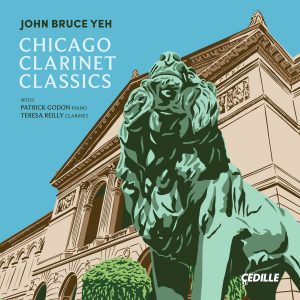 Chicago Symphony Orchestra assistant principal and solo E-flat clarinetist John Bruce Yeh presents an exquisite collaboration with pianist Patrick Godon and clarinetist Teresa Reilly in Chicago Clarinet Classics. The longest-serving clarinetist in the CSO, Yeh has performed as guest principal clarinetist of the Philadelphia Orchestra, Seoul Philharmonic, and Guangzhou Symphony, and as guest bass clarinetist with the Mariinsky Orchestra and Hong Kong Philharmonic. An advocate of new music, Yeh released over two dozen solo and chamber music recordings to worldwide critical acclaim. His roles as director of Chicago Pro Musica and faculty at Roosevelt University’s Chicago College of Performing Arts and Midwest Young Artists Conservatory further extend his musical influence.
Chicago Symphony Orchestra assistant principal and solo E-flat clarinetist John Bruce Yeh presents an exquisite collaboration with pianist Patrick Godon and clarinetist Teresa Reilly in Chicago Clarinet Classics. The longest-serving clarinetist in the CSO, Yeh has performed as guest principal clarinetist of the Philadelphia Orchestra, Seoul Philharmonic, and Guangzhou Symphony, and as guest bass clarinetist with the Mariinsky Orchestra and Hong Kong Philharmonic. An advocate of new music, Yeh released over two dozen solo and chamber music recordings to worldwide critical acclaim. His roles as director of Chicago Pro Musica and faculty at Roosevelt University’s Chicago College of Performing Arts and Midwest Young Artists Conservatory further extend his musical influence.
This album champions 20th and 21st-century music by Chicago-connected composers, and the delicate expressions, seamless balance, and impeccable technique that permeate each work are a rare treat to behold. From start to finish, the album is an exceptional listening treasure, and the extensive liner notes provide a wealth of historical context for each composition.
Opening with quiet introspection, Tcherepnin’s Sonata in One Movement has flowing passages interspersed with lively articulations placed with the utmost care. The clarinet and piano meld into a single instrument that calls forth a collaboration of the highest order, evoking timbres constantly desired yet rarely experienced in recordings.
Scored for solo clarinet, Garrop’s Phoenix Rising explores storytelling through dramatic and lyrical expression. The legend of the phoenix is told through extensive use of timbral variation, colorful effects, and dramatic expression. Impeccable musicianship and flawless technique invite the listener to imagine a color palette radiating into the universe.
Unyielding balance and collaboration form the cornerstone of Sowerby’s Sonata for clarinet and piano. The four movements exhibit resonance, charm, and centeredness, with the duo highlighting the inherent introspective intention. Calm resonance and serene beauty are portrayed through each phrase, enhancing the composer’s desired effect.
The brilliant array of human emotions is captured in Ran’s Spirit for solo clarinet. Simultaneously haunting and evocative, the rapturous performance tells of life well-enjoyed. Spirited in sentiment, the exemplary technique and nuanced phrasing make the interpretation perfect.
A seamless melding of interpretive expressions with clarinetist Teresa Reilly produces The Forgiveness Train. Motifs are placed into one another, and the clarinet lines weave and connect in perfect unison, landing together and then fluttering to separate ideals. The matching of tone and technique is impeccable, creating an unparalleled pinnacle of clarinet duo performance.
Crystal clarity, nuanced phrasing, and exceptional intonation highlight the Time Pieces by Muczynski. The rhythmic interplay of lines is brought to the forefront as Yeh and Godon become a single unit to interpret this timeless classic.
Yeh’s exquisite compilation of powerful newer compositions for clarinet, mated with skillful collaborators in Godon and Reilly, is priceless—the precise technique, emotional nuances, and delicate phrasing place this recording in an exemplary category. The variety of styles provides a balance of expressions, and the blend of solo and chamber works invigorates the palette. An album of this quality is a rare treat to be cherished, enjoyed, and shared with performers and aficionados.
– Michelle Kiec
Songs of Celebration. Emma Johnson, clarinet, narrator; John Lenehan, piano; Gloucester Cathedral Choir, Adrian Partington, director. E. Johnson: Songs of Celebration; Variations on “We Wish You a Merry Christmas”; J. Dove: The Pied Piper; M. Leontovych, F. Gruber, trad. /arr. E. Johnson: Christmas Suite; J.S. Bach/arr. E. Johnson: “Jesu, Joy of Man’s Desiring” from Cantata, BWV 147. Nimbus Records, NI 6431. Total Time: 58:54.
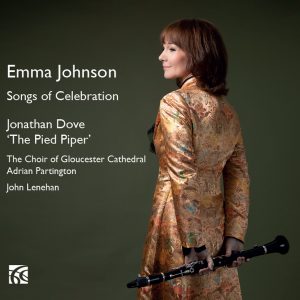 This album is a collection of Christmas works as a musical celebration of the holiday. Songs of Celebration is an original work written by internationally acclaimed clarinetist Emma Johnson. Fascinated with the scoring for clarinet and upper voices, Johnson composed four songs, all celebrating the Christmas story, to create the four-movement work Songs of Celebration. The first song was inspired by one of Johnson’s favorite medieval poems, I Sing of a Maiden that is Makeless. The songs in the suite include “I Sing of a Maiden,” “He is Born the Divine Infant King,” “Precious Gift,” and “There is No Rose.” This work is beautifully scored for clarinet and SSA choir and can be performed as separate songs or as a suite. Johnson’s spectacular composition and performance with the Gloucester Cathedral Choir are elegantly captured in this album, a fantastic new addition to the repertoire for holiday performance.
This album is a collection of Christmas works as a musical celebration of the holiday. Songs of Celebration is an original work written by internationally acclaimed clarinetist Emma Johnson. Fascinated with the scoring for clarinet and upper voices, Johnson composed four songs, all celebrating the Christmas story, to create the four-movement work Songs of Celebration. The first song was inspired by one of Johnson’s favorite medieval poems, I Sing of a Maiden that is Makeless. The songs in the suite include “I Sing of a Maiden,” “He is Born the Divine Infant King,” “Precious Gift,” and “There is No Rose.” This work is beautifully scored for clarinet and SSA choir and can be performed as separate songs or as a suite. Johnson’s spectacular composition and performance with the Gloucester Cathedral Choir are elegantly captured in this album, a fantastic new addition to the repertoire for holiday performance.
Commissioned by Johnson, Jonathan Dove’s The Pied Piper is based on a poem by Robert Browning and scored for clarinet, recorder consort, children’s voices, and piano. In addition to playing the clarinet, Johnson also narrates this work. As the composer states:
The piece took on larger dimensions when the commissioner invited us to include massed recorder players. I realized that the youthful players could conjure up the infestation of rats with some penetrating squeaking. In a more melodic vein, the recorders could then create a magical atmosphere when the Piper changes his tune to summon the children of Hamelin.
Johnson presents this delightful work with great character and color.
The Christmas Suite was arranged by Johnson after she performed Songs of Celebration with the Gloucester Cathedral Choir and director Adrian Partington. This suite includes “Carol of the Bells,” “Coventry Carol,” and “Silent Night.”
Variations on “We Wish You a Merry Christmas” was composed as an encore for a concert in Romsey Abbey. As Johnson states, “The variations are light and frothy and you may detect one or two other carol quotations in there, to be stumbled upon at random like sixpences in a Christmas pudding.” These variations are performed with John Lenehan playing piano.
The final work on this collection is Johnson’s arrangement of Bach’s “Jesu, Joy of Man’s Desiring” with the Gloucester Cathedral Choir.
Emma Johnson has assembled an exciting collection in this recording. If you are looking for some new selections to celebrate the Christmas holiday, look no further than this album. The sheet music can be purchased through Encore publications.
– Julianne Kirk Doyle
Voyage. Jeff Anderle, solo clarinet and bass clarinet; Nomad Session: Victoria Hauk, flute and piccolo; Jesse Barrett, oboe and English horn; Jonathan Szin, clarinet and bass clarinet; Kristopher King, bassoon; Stephanie Rickard, French horn; Ari Micich, trumpet; Esther Armendariz, trombone; Jonathan Seiberlich, tuba. J. Russell: Nomad Concerto; S. McAllister/arr. S. Rickard: Black Dog. Digital Release. Total Time: 29:49.
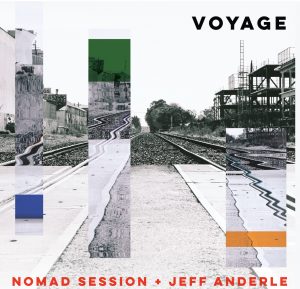 Jeff Anderle currently teaches clarinet, technology, and chamber music at the San Francisco Conservatory of Music, where he is chair of the woodwind department. He performs with the bass clarinet duo Sqwonk, the Splinter Reeds Woodwind Quintet, and the heavy metal bass clarinet quartet Edmund Welles, and is principal clarinet of the Monterey Symphony. As a soloist, he has performed many concertos and has premiered over 200 works. He is an advocate for contemporary music and is co-founder of Switchboard Music. He is a Selmer Paris Performing Artist.
Jeff Anderle currently teaches clarinet, technology, and chamber music at the San Francisco Conservatory of Music, where he is chair of the woodwind department. He performs with the bass clarinet duo Sqwonk, the Splinter Reeds Woodwind Quintet, and the heavy metal bass clarinet quartet Edmund Welles, and is principal clarinet of the Monterey Symphony. As a soloist, he has performed many concertos and has premiered over 200 works. He is an advocate for contemporary music and is co-founder of Switchboard Music. He is a Selmer Paris Performing Artist.
Nomad Session is San Francisco’s premier wind octet representing members of every woodwind and brass family (flute, oboe, clarinet, bassoon, French horn, trumpet, trombone, and tuba) and is the first to use this instrumentation as a platform for a professional chamber ensemble. Nomad Session has commissioned seven new works for wind octet. Using the extreme versatility of their instruments, Nomad Session’s website states, “Nomad Session introduces audiences to a world of new musical opportunities by commissioning contemporary repertoire that further establishes the wind octet as a widely accepted chamber music genre.”
Jonathan Russell is not only a composer/arranger but was a longtime bass clarinet member of the Edmund Welles bass clarinet quartet, the Sqwonk bass clarinet duo along with Jeff Anderle and is also the founder and leader of Improbable Beasts, a professional 15-member bass clarinet ensemble in the Boston area. His one-movement Nomad Concerto is 18 minutes and 51 seconds of interconnected timbre and texture as well as a barrage of exhilarating rhythmic energy and technical mastery. This work is not in a traditional concerto form. The piece begins with a soft, plaintive motive in the bass clarinet. It is rhythmically free, the other voices slowly appearing, creating layers of sound. As each voice enters, the intensity level builds and finally arrives at a point where the bass clarinet introduces a driving rhythmic ostinato, the other instruments adding to the frenzy. When the excitement recedes, we arrive at a slower section, which eventually leads to the final segment of this concerto, with fast repetitive rhythms, aggressive articulations, and dynamics leading to an energetic finale. The level of the musicianship from all involved is exceptional. This performance is successfully achieved because of the talent and proficiency of this first-rate ensemble of performers. Anderle does a superb job of navigating the bass clarinet registers with ease, and deftly handles the challenging technical passages. The rhythmic precision is excellent. The blend of textures and color choices throughout the ensemble allows the listener to appreciate the high quality and fine balance of the work.
Scott McAllister is professor of composition and director of the Division of Academic Studies at Baylor University. He is a prolific composer and is known for his works that feature the clarinet, notably his X Concerto, Freebirds, and the highly popular Black Dog. Anderle handles the bold opening of Black Dog—which features the wildly improvisatory clarinet solo—with technical command. Throughout the work, Anderle expertly demonstrates his prowess with keen sense of timing and virtuosic proficiency. The arrangement of Black Dog by the hornist of Nomad Session, Stephanie Rickard, is outstanding. It is as convincing as the wind ensemble arrangement. I personally like this more intimate setting of this tremendously complex work of extremes.
Jeff Anderle and Nomad Session are an extraordinary group of musicians. Both Nomad Concerto and Black Dog are engaging and exciting. Each work shows the adeptness and expertise of these fine performers.
– Lori Ardovino
NEW RELEASES
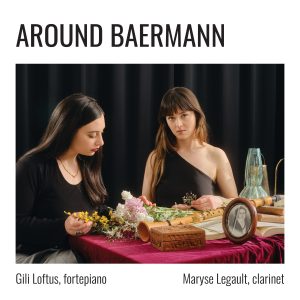
Around Baermann. Maryse Legault, clarinet; Gili Loftus, fortepiano. Leaf Music, LM265.
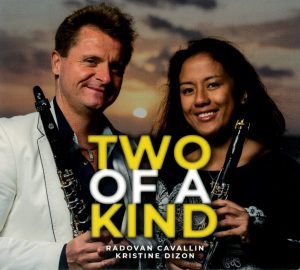
Two of a Kind. Radovan Cavallin, clarinet; Kristine Dizon, clarinet. Modern Artist Project.
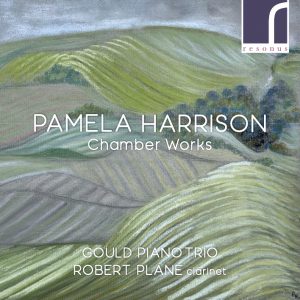
Pamela Harrison: Chamber Works. Robert Plane, clarinet; Lucy Gould, violin; David Adams, violin; Gary Pomeroy, viola; Richard Lester, cello; Benjamin Frith, piano; Florence Plane, bassoon; Gould Piano Trio. Resonus Classics, RES10313.
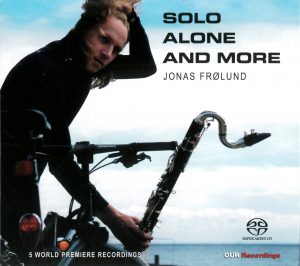
Solo Alone and More. Jonas Frølund, clarinets. OUR Recordings, 6.220681.

Isotonic: Commissions for Clarinet by Burrell, Watkins, Boden, and Jenkins. Robert Plane, clarinet; Gould Piano Trio: Lucy Gould, violin; Richard Lester, cello; Benjamin Frith, piano; BBC Philharmonic, Geoffrey Paterson, conductor. Resonus Classics, RES10319.
Comments are closed.